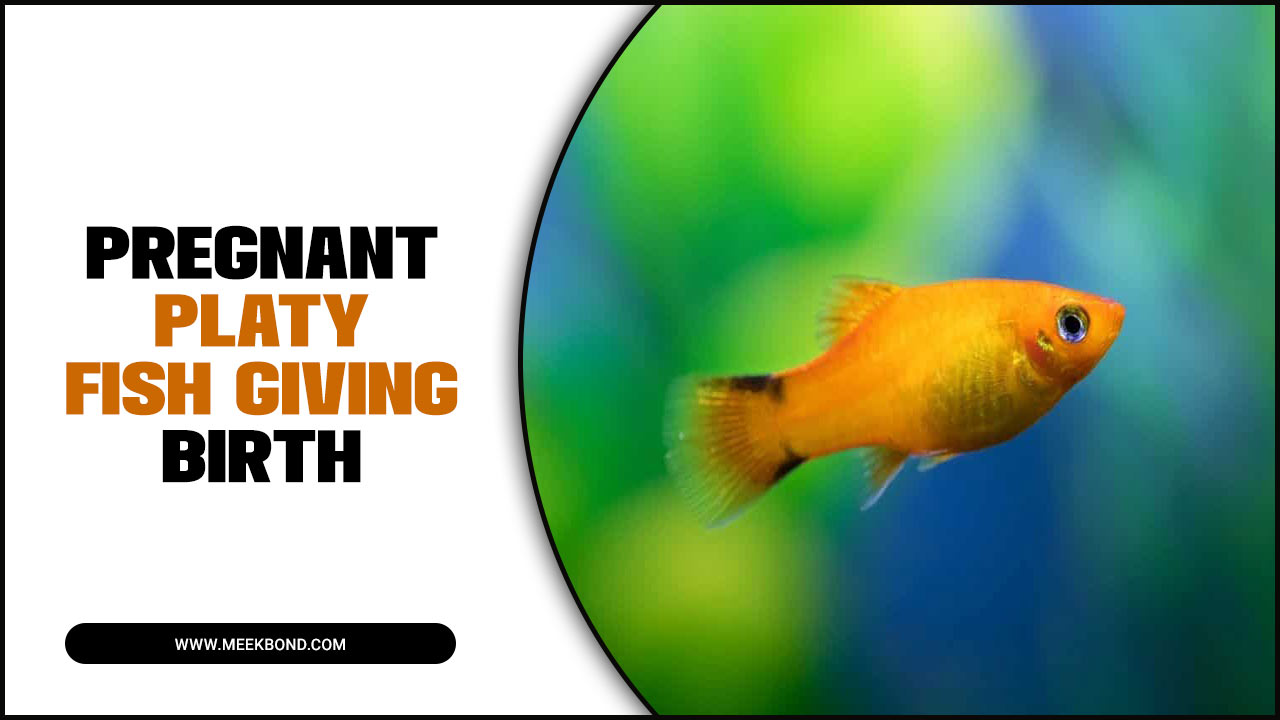Fish flashing is a common phenomenon observed in aquariums that often raises concern among fish enthusiasts. This behavior is characterized by fish repeatedly darting or twitching their bodies and fins, often in a jerky manner.
As a result, many aquarium owners worry that their beloved pets are sick or distressed. However, while fish-flashing can indicate an underlying issue, it is not necessarily a cause for alarm. Understanding the causes of this behavior is essential for addressing any underlying issues and promoting healthy fish behavior.
Here, we will explore the main reasons fish display flashing behavior and what it could mean for their health. We will investigate the potential flashing causes, including water quality, aquarium size, and social stress. Additionally, we will discuss how to prevent and treat flashing behavior, from adjusting water parameters to managing tank mates. We aim to provide aquarium enthusiasts with practical strategies for promoting healthy and happy fish in their tanks.

Why Do Fish Flash?
Fish-flashing is a behavior in which fish rapidly dart or swim in a repeated pattern. Stressed fish often exhibit this behavior when infected with parasites or experiencing an imbalance in their environment. Flashing can also be a sign of aggression or territorial behavior.
Sometimes, it may be a natural behavior related to courtship or communication. If you notice flashing in your aquarium, it’s important to identify and address any underlying issues that may be causing stress or discomfort for your fish.
Types Of Fish That Are Known To Flash
Fish-flashing refers to a behavior exhibited by some fish where they rapidly move and twist their bodies in the water. Various factors such as parasites, poor water quality, or aggressive tank mates can cause this behavior, which is often a sign of distress or irritation. Some types of fish that are known to flash include
- Tetras,
- Angelfish, and
- Cichlids.
It is important for fish owners to monitor their fish for signs of flashing and promptly address any underlying issues to ensure their aquatic pets’ health and well-being.
How Fish Flashing Is Different From Other Fish Behaviors

Fish flash is a behavior where fish rapidly move their bodies or fins, resulting in a quick flash of movement. This behavior is different from other fish behaviors because it is often associated with a response to parasites or other irritants on the skin.
Fish flash can also occur due to stress or aggression among fish, but it is most commonly seen as a defense mechanism against parasites. Fish owners must monitor their fish for signs of flashing, as it can indicate an underlying health issue requiring treatment.
Importance Of Studying Fish Flash
It looks like they’re doing some underwater dance. But don’t be fooled; your aquatic friends might be showing this behavior as a sign of something being off. Fish flash can indicate several things. It could be a sign of stress or irritation, often caused by poor water quality or overcrowding. Additionally, it could be a response to parasites or other health issues. Studying flashing is important for several reasons:
- Health: Flashing can be a sign of poor health or stress. By studying this behavior, researchers can better understand what causes it and how to prevent or treat it.
- Communication: Some fish use flashing to communicate with each other. Researchers can learn more about fish communication and social behavior by studying this behavior.
- Ecology: Flashing can also be an important ecological indicator. For example, flashing in salmon can indicate changes in water quality or pollution levels.
Causes Of Flashing – When Does It Happen?

Flashing is when fish rapidly dart or scratch themselves against objects in the aquarium. Usually, factors such as poor water quality, parasites, stress, or an unhealthy diet can cause this behavior, which is a sign of distress. One of the most common causes of flashing fish is the presence of parasites like ich or flukes, which can irritate the fish’s skin and cause them to scratch.
Poor water conditions, such as high ammonia or nitrate levels, can also lead to flashing as they can irritate the fish’s skin and gills. Stress is another common cause of fish-flashing, possibly due to overcrowding, aggressive tank mates, or sudden environmental changes. A healthy diet and good water quality can help reduce the risk of fish-flashing.
Predators And Prey
Predators and prey relationships are common in the animal kingdom, including fish. Fish-flashing is a behavior where prey fish swim near the water surface and make sudden, darting movements to escape predators. This behavior can also communicate to other fish in potential danger.
Predators use various tactics to catch their prey, including ambush, stalking, and chasing. They also have adaptations such as sharp teeth, strong jaws, and keen senses to help them hunt. The relationships between predators and prey are complex and often influenced by habitat, food availability, and competition.
Examples Of Fish That Flash To Avoid Predators
Fish-flashing is a behavior in which fish use their reflective scales or skin to produce a sudden burst of light to avoid predators. Fish that live in open water or near the surface typically exhibit this behavior because predators pose a greater threat to them.
Some examples of fish that use flashing as a defense mechanism include herring, sardines, and anchovies. These fish typically school together and flash simultaneously, creating a dazzling display that can confuse or startle predators and allow the fish to escape.
Examples Of Predators That Use Flashes To Attract Prey
Several examples of predators use flashes to attract prey, particularly in aquatic environments. Fish are popular to use flashing as a tactic to lure in prey. One example is the flashlight fish, which has a bioluminescent organ under its eyes that it uses to communicate with other members of its species and also to attract small fish to eat.
Another example is the anglerfish, which uses a bioluminescent lure to attract prey in the ocean’s dark depths. Some shrimp species also use flashing to attract prey, such as the mantis shrimp, which creates light flashes to stun prey. Using flash as a predatory tactic is a fascinating adaptation that has evolved in many species.
Mating And Courtship
Mating and courtship refer to animals’ behaviors to attract and select a mate. These behaviors can be highly variable between species, but they usually involve some display or signal that indicates fitness as a potential mate.
In fish, courtship behaviors may include changes in coloration, fin displays, and physical contact. Males may also build nests or defend territories to attract females.
Once a mate has been selected, fish may engage in various mating behaviors, such as spawning or internal fertilization. Some species may also engage in post-mating behaviors, such as parental care of offspring.
Examples Of Fish That Flash During Breeding Season

Fish-flashing is a behavior exhibited by some fish during their breeding season. It involves jumping out of the water and exposing their body to air, which produces a flashing effect. Scientists often observe this behavior in salmon, trout, and herring species.
The flashing is a way to communicate with potential mates or establish dominance over other males. It may also serve as a way to dislodge parasites or irritants from the fish’s skin. Fish flashing is an interesting and unique behavior worth studying for its potential insights into fish biology and ecology.
How Flashing Can Indicate Reproductive Fitness

Flashing in fish refers to a sudden burst of movement where the fish rapidly darts or swims erratically, often in a vertical direction. It is thought that flashing can indicate reproductive fitness in fish. Some researchers suggest that flashing may signal good health and vitality, as only a healthy fish can afford to waste energy on such behavior.
Additionally, flashing may help attract a mate by drawing attention to the fish’s bright and colorful scales. Flashing can also be a sign of irritation or discomfort, such as the presence of parasites or other external irritants.
Environmental Factors
For example, changes in water temperature or pH levels could startle fish and cause them to flash, which may signal a warning to other fish in the area. Additionally, predators like birds or larger fish may cause smaller fish to flash to distract or confuse their attacker.
Human activities such as fishing or boating may also trigger fish-flashing, as the noise and disturbance can disrupt their natural behavior and cause stress. It is important to be aware of these environmental factors and their potential impact on fish behavior to ensure the sustainability and well-being of our aquatic ecosystems.
How Flashing Can Signal Danger Or Safety To Other Fish
Fish flashing is a behavior in which a fish rapidly contracts and relaxes its muscles, causing its body to shimmer or flash. This behavior can serve as a signal to other fish, indicating either danger or safety.
In some cases, fish may flash to warn others of danger. For example, a fish may flash when it sees a predator nearby, alerting other fish to the potential threat. Other fish may respond to the flashing by either fleeing or hiding.
On the other hand, fish may also flash to signal safety. For example, some fish species may flash to communicate that they are healthy and free of parasites or disease. This can help attract potential mates or signal to other school members that the area is safe.
Conclusion
Fish flashing is a unique and entertaining phenomenon in various parts of the world. Whether it’s a survival mechanism or a mating ritual, it’s clear that fish have some seriously impressive moves. At the same time, we may never know the full extent of why fish flash; it’s safe to say that it adds to the wonder.
Flashing is a term used to describe when fish quickly dart back and forth or rub against objects in their tank. Some common reasons for fish-flashing include poor water quality, overcrowding, aggressive tankmates, or parasites. It’s important to monitor the behavior of your fish and address any potential issues to ensure they stay healthy and happy.
FAQ
What Is Flashing, And Why Do Fish Do It?
Fish-flashing is a behavior where fish rapidly swim. And rub their bodies against surfaces, often jumping or rolling. It is believed to be a way for fish to relieve skin irritation caused by parasites, diseases, or other environmental factors. By rubbing against surfaces, the fish may dislodge or remove the irritants.
How Can Fish Flash Be A Warning Sign For Other Fish In The Ecosystem?
Fish flash, also known as a sudden bright burst of light, can be a warning sign for other fish in the ecosystem because it could indicate the presence of a predator or danger in the water. Some fish have evolved to use their reflective scales to create a flash of light to signal other fish to move away and quickly avoid potential danger.
Are Certain Species Of Fish More Prone To Flashing Than Others?
Yes, certain species of fish are more prone to flashing than others. For example, some species of cichlid fish, such as the electric blue hap, are known to flash frequently. This behavior can be a sign of stress or illness in fish, so monitoring their behavior and environment is important to ensure their health and well-being.
Can Environmental Factors Affect The Frequency Of Flashing?
Yes, environmental factors like water temperature or pollution can affect the frequency of fish flashing. For example, higher water temperatures can cause fish to flash more frequently to cool down. On the other hand, pollution can irritate fish and cause them to flash more often to remove the irritants.
What Are The Potential Benefits Or Drawbacks Of Fish Flashing Regarding Survival And Reproduction?
Fish-flashing, which refers to a behavior where fish rapidly display their bright colors or lateral lines, can attract predators but can also serve as a warning signal to potential predators, indicating the presence of toxins or parasites. Additionally, fish-flashing may play a role in mate selection and courtship behavior, potentially increasing reproductive success.

Aquarium passion is all about connecting with the aquatic life and providing education to the public on the importance of these creatures. We showcase a wide variety of marine life through our exhibits as well as working with schools to provide unique learning opportunities for students of all ages.









